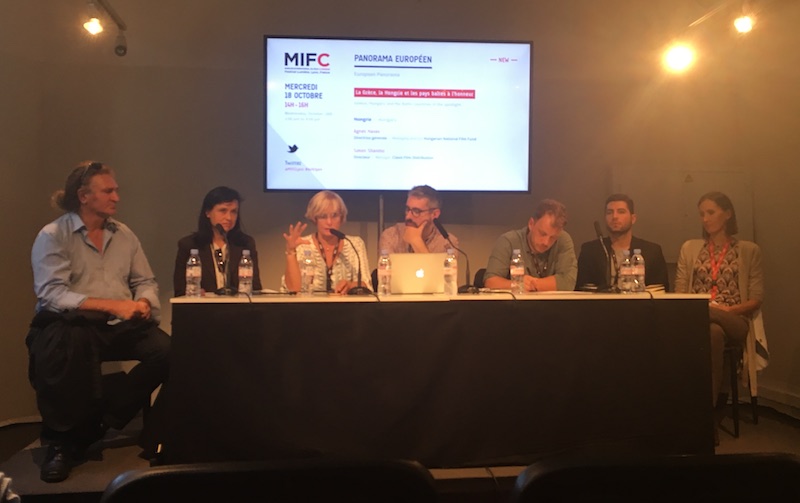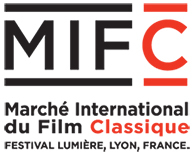European panorama: "2018 will be the year of cultural heritage in Europe"
Opened by Matteo Zacchetti, DG Connect Media Support Programs, the round table moderated by Anthony Bobeau focused on three countries in particular: Greece, Hungary and Latvia.

Three countries, three specific cases. If 2018 is the year of the cultural heritage in Europe as announced by the representative of the European program MEDIA, it will be very different from one country to another because, as Matteo Zacchetti says, the problems encountered by the cinema heritage in Europe are the same as those of cinema in general. One could even add that they are also the same as those of each state, politically, historically and economically.
First of all Greece. If, as Laetitia Kulyk, audiovisual cooperation attaché of the French Institute of Greece, says, heritage cinema was still very popular there 20 years ago, times have changed. To understand this, one must understand the local exploitation divided between summer cinema and winter cinema. And that 30 years ago, there was no cinematheque. The classic films were broadcast especially in summer in outdoor cinemas with real success. Since several problems have occurred and accumulated: the arrival of the digital, missed by the country, the congestion of movie releases (about 8-10 per week) for only a little less than 11 million inhabitants, the crisis, the lack of image education and the multiplication of free outdoor projections. In addition, Greece does not have a real central policy around archives and no plan has yet been set up for the restoration of Greek films. But on the occasion of the creation of a platform on behalf of the Greek Film Center, the restoration project of 150 films planned a few years ago should come back to life.
On the Hungarian side, things are more encouraging, notably thanks to a major systematic digitization and restoration campaign launched this year by the Hungarian National Film Fund at the rate of 15 films per year for restoration and 30 to 40 digitized for a budget of 2.5 M€. Until then, only 12% of Hungary's film heritage was digitized. The advantage of the Hungarian fund is that it holds both the archives and the laboratories to restore, so it does not work at a loss. Income is even possible because it sells its own films abroad. In addition, the Hungarian National Film Fund is preparing to launch a cinematheque dedicated to Hungarian and international repertory films.
Finally, in Latvia, the situation is more complex for historical reasons. As the country prepares to celebrate its 100 years of independence, it was occupied, for much of this centenary, from 1945 to 1990, by Russia as part of the Soviet Union. At the time, Riga had one of the largest studios in the world, with the making of 8 to 10 films per year. Problem: financed largely by Moscow, the negatives and materials of these feature films and other works are stuck there. Russia refuses to return them and wants Latvia to buy them back. That's why over the past 25 years, only 10% of Latvian classic films have been restored and digitized. 10 feature films will be restored between 2017 and 2018 thanks to European aids, and will be freely available on the internet.


